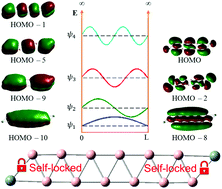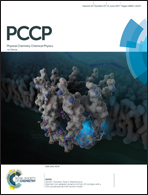Silicon doped boron clusters: how to make stable ribbons?†
Abstract
A doping of small boron clusters with silicon atoms leads to the formation of stable boron nanoribbon structures. We present an analysis on the geometric and electronic structure, using MOs and electron localization function (ELF) maps, of boron ribbons represented by the dianions B10Si22− and B12Si22−. The effect of Si dopants and the origin of the underlying electron count [⋯π2(n+1)σ2n] are analyzed. Interaction between both systems of delocalized π and σ electrons creating alternant B–B bonds along the perimeter of a ribbon induces its high thermodynamic stability. The enhanced stability is related to the self-locked phenomenon.



 Please wait while we load your content...
Please wait while we load your content...